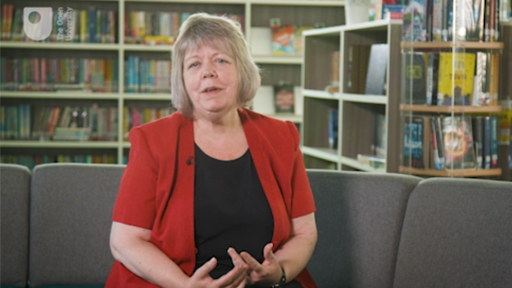3 Promoting non-fiction and subject-specific reading
For lots of teenagers, reading for pleasure is a concept associated with fiction rather than non-fiction. Indeed, it may not even occur to many of them that reading non-fiction has the potential to be enjoyable. Instead, the idea of reading around a subject can seem little different from doing extra homework. However, doing so can help broaden student’s knowledge and give them a deeper appreciation for their subject. It is therefore important that as a librarian you encourage students to engage with non-fiction and extra-curricular reading as much as possible, helping them to see it not as a chore, but an opportunity to satisfy their curiosity and push the boundaries of their knowledge. To repurpose a metaphor by Cressida Cowell, the author of the How to Train Your Dragon series, we should be aiming for students to view non-fiction books as sweets rather than brussels sprouts (Cowell, 2018). By encouraging students to engage with reading in this way, you can help them develop lasting habits which will stand them in good stead for success in later life.
It’s important to recognise that many students will already engage daily with non-fiction content online so encouraging them to make a connection between their digital reading and the physical books in your library can help make non-fiction books less daunting. However, online reading should still be encouraged as much as possible, as students who read extensively online, whether that be emails, chat messengers, the news, or online discussions ‘are generally more proficient readers than students who do little online reading’ (OECD, 2010, p. 12). Recent studies have also shown that reading e-books supports children’s vocabulary, spelling, and reading comprehension skills, and is just as effective in the development of literacy as reading traditional print books (López-Escribano et al., 2021)
Additional resources
If you are interested in looking at the differing roles of digital and physical books in encouraging reading for pleasure you may find the following OpenLearn badged course of use: Developing Reading for Pleasure: engaging young readers [Tip: hold Ctrl and click a link to open it in a new tab. (Hide tip)]
For students who struggle to devote their attention to books, non-fiction and reference books are perfect for dipping in and out of. Encouraging an avid sports fan to pick up a non-fiction book about the Olympics, for example, can act as a gateway to further reading. Building a collection of books and resources which not only reflects the subjects and topics taught in your school, but also evokes curiosity amongst students is, therefore, an important part of your job as a librarian.

Having a pupil suggestion box, making notes of any informal conversations of note, and liaising with the student council, are all ways you can maximise the likelihood that your resources reflect what students want. However, it is crucial that your collection is primarily influenced by the curriculum. As we discussed previously in Session 1, it is, therefore, particularly beneficial for you to develop close working relationships with your colleagues who can guide you to useful resources and help you decide which to invest in. These resources might support specific topics taught within the classroom or provide broader subject-related materials to aid students’ research and wider reading. Whether it’s a simple email, an informal conversation, a scheduled meeting or a formal presentation, liaising with colleagues from across the school can only have a positive influence on your library and its contribution to teaching and learning. Developing these close working relationships can be symbiotic in providing opportunities for you to find new and helpful resources for your colleagues.
To explore this subject further, watch the video below where Sarah discusses the ways you can maintain a high profile amongst your colleagues and identify opportunities for collaboration. After you have done this, complete the activity, reflecting on your current approach to collaborative collection management.

Transcript: Video 3
Attending training days, assemblies and departmental meetings are a good way to develop a high profile in your school community. Approaching and building a relationship with the school governor who is responsible for the library can also help to ensure your position is well represented in decision-making.
Activity 4
In the table below, note down two colleagues you liaise with and how they have influenced which resources you have invested in.
| Colleague | Influence on resources invested in |
|---|---|
| EXAMPLE: Admissions officer | Books in foreign languages for students with English as their second language |
Now that you have completed Table 2, note down two colleagues you don’t yet interact with and explain why it would be beneficial to do so.
| Colleague | Benefit |
|---|---|
